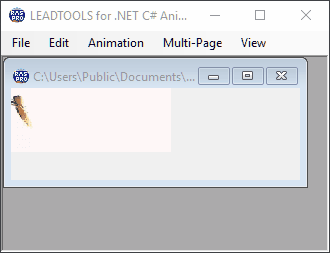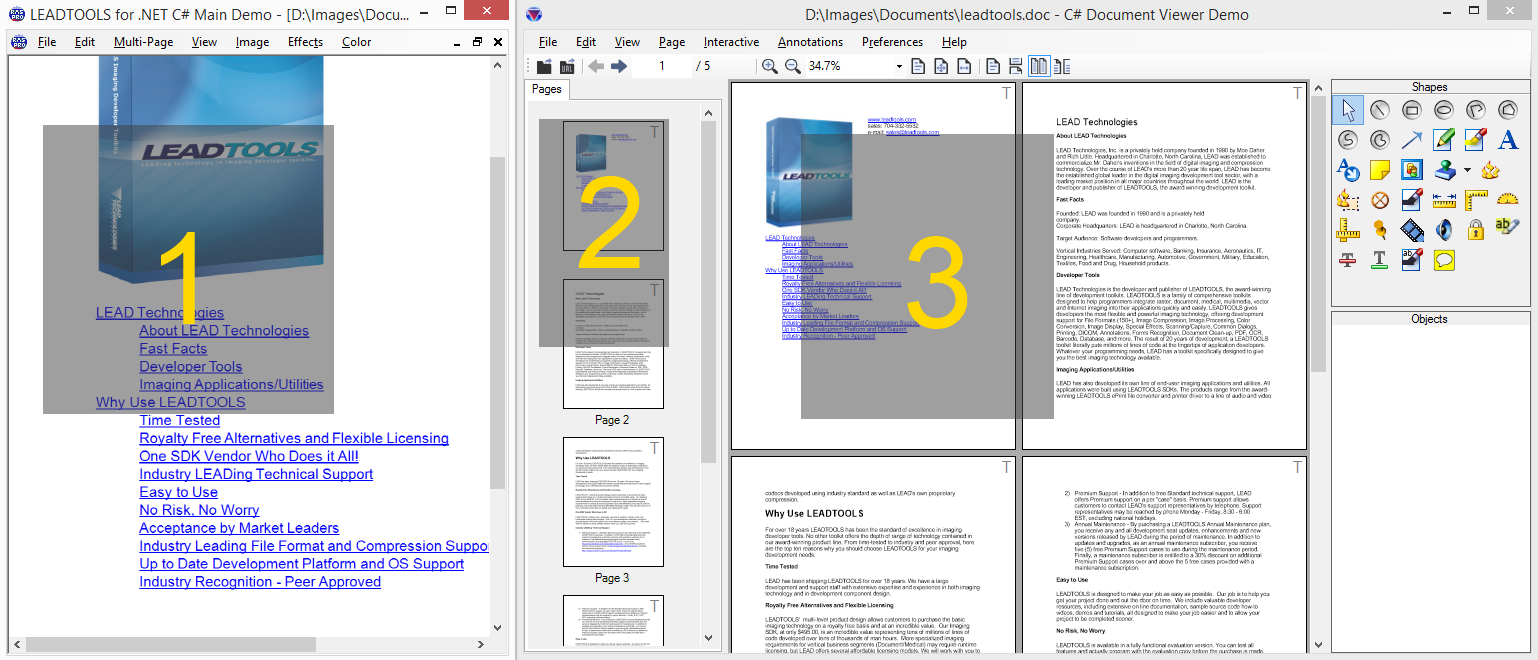Leadtools.Controls Introduction (.NET) (original) (raw)
Summary
The Leadtools.Controls assembly includes two classes that can be added to the Visual Studio toolbox as Windows Forms controls: the RasterPictureBox control and the ImageViewer control. Use these controls to view and manipulate images.
It also contains other classes, such as RasterClipboard and ImageViewerPanControl.
RasterPictureBox Class
The RasterPictureBox class is a PictureBox control used to display images. Use the control to display graphics from a bitmap, metafile, icon; JPEG, GIF, or PNG file (or any other image file format supported by LEADTOOLS). The following figure shows the Animation Demo using a RasterPictureBox to display an animated GIF file:

Note that the RasterPictureBox control can automatically animate multipage formats.
RasterPictureBox Features
- Single-item display
- Automatic and custom scroll modes
- High-level animation of multipage formats, including GIF and TIFF
ImageViewer Class
The LEADTOOLS ImageViewer class is a control used to display one or more raster or SVG images with (optional) interactive UI operations. Use the class to create single-item applications like MS-Paint, or multiple-item applications like Adobe Acrobat. The following figure illustrates three of the layouts in which the ImageViewer can be used:

- The LEADTOOLS Main Demo, using an
ImageViewerinstance in the single layout mode to view the main image - The LEADTOOLS Document Viewer, using an
ImageViewerinstance in the vertical layout mode to view image thumbnails - The LEADTOOLS Document Viewer, using another
ImageViewerinstance in the double layout mode to view the main content
ImageViewer Features
The ImageViewer class provides the following features:
- Single- or multiple-item display. Each item has its own image data, size, and optional additional transformations
- Built-in support for displaying and loading raster and SVG images and documents directly from disk files or URLs
- Extensible layout system with built-in support for single, vertical, and horizontal layouts
- Rich, built-in, fully customizable and extensible user-interface. Support for many interactions, including panning, zooming, magnifying, rubber banding, etc. Supports both mouse and touch input
- Fully customizable appearance and position
- Automatic and custom scroll modes
- Owner draw rendering
- Viewing options include infinite zooming in different size modes (fit, fit page, etc.), rotation at any angle, flip, reverse, color inversion, and low-level transformations
- High-level item operations for hit-testing and navigation
- Drag and drop between the
ImageViewerand external sources such as the file system or otherImageViewerinstances - Floater and region support
- Virtualization mode for handling large numbers of images